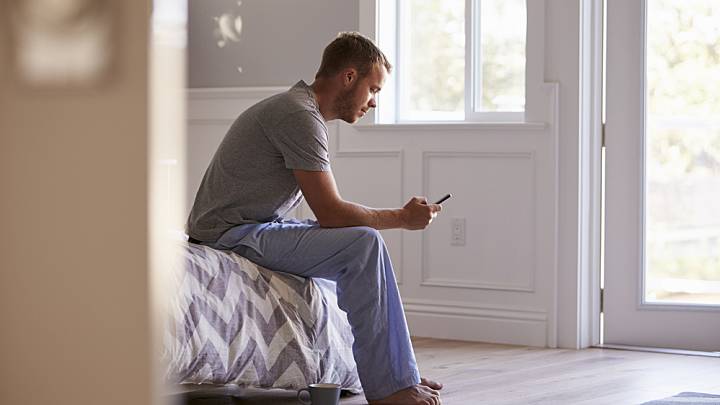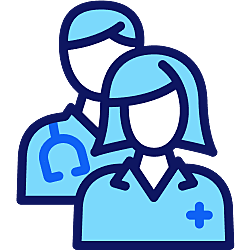Testicle Pain and STIs

Medically reviewed by
Dr Kathryn BasfordLast reviewed: 21 Mar 2022
Are they always linked?

Key takeaways
Testicle pain can be a sign of a STIs like chlamydia, gonorrhoea or syphilis
Testicle pain does not mean you definitely have an STI
There are non-sexual infections and other health conditions that cause testicle pain
There are effective treatments for most causes of testicles pain
Testicular torsion and cancer are the most serious causes of pain so it's important to see a doctor
Does testicle pain mean I have an STI?
Not necessarily. Testicle pain can often be a sign of a sexually transmitted infection (STI), but not always. The causes of testicle pain can be either infectious and non-infectious.
If you have testicle pain, or any other common symptoms of STIs, you should get tested for STIs. You can do this with a home test kit from an online service like ZAVA, or by visiting your GP or local sexual health clinic.
If you’re concerned that your testicle pain might be caused by something other than an STI, you should visit your GP as soon as you can to try to find out what might be causing it.
from £135.99
from £30.99
from £35.99
from £35.99

No results found.
Please check your spelling or try another treatment name.
Which STIs can cause testicle pain?
Most likely STI causes – sexually transmitted infections which most commonly cause testicle pain are:
- Chlamydia
- Gonorrhoea
- Syphilis
Chlamydia – this is a sexually transmitted infection and is one of the most common STIs in the UK. You can catch chlamydia through unprotected sex, so you should always use a condom. A major problem with chlamydia is it often presents with no symptoms at all which can mean individuals may not know they are infected and pass it on. However, if you do have symptoms they may include:
- Pain when urinating
- Unusual discharge from the penis, vagina or anus
- Women may experience stomach pain or bleeding after sex or between periods
- Men can experience testicular pain
Chlamydia is caught through vaginal, oral and anal sex – you can catch it if your genitals touch an infected person’s genitals and vice-versa, plus you can get chlamydia in your eye if infected semen or vaginal fluid enters it. If you suspect you may have chlamydia or have had unprotected sex, you should get tested. The infection can usually be treated with a short course of antibiotics and should have no serious effects if caught early.
Gonorrhoea – this is another common sexually transmitted infection which can cause testicle pain in men. You may have also heard it being referred to as ‘the clap’. Just like chlamydia, gonorrhoea is also passed on through unprotected sex. The typical symptoms of gonorrhoea are:
- A thick green or yellow discharge from the penis or vagina
- Pain when urinating
- Bleeding between periods in women
- Testicular pain in men
However, some people experience no symptoms at all and so it is important to get tested if you have had unprotected sex. Usually, 10% of men and 50% of women experience no symptoms of gonorrhoea at all.
Syphilis – this is a less common STI. Symptoms include:
- Ulcers anywhere on the body
- Painless rash
- Flu-like symptoms
- Tiredness
- Swollen glands
- Hair loss
You can catch syphilis from unprotected sex, therefore you should have an STI check if you have had unprotected sex.
What else can cause testicle pain?
Non-sexually-transmitted infectious causes:
- Urinary tract infection
- Prostate infection
- Mumps
Non-infectious causes:
- Testicular torsion
- Inguinal hernias
- Kidney stones
Testicular torsion – also known as a twisted testicle. This is common in those under the age of 25 and affects around 1 in 4000 males. Trauma (physical damage) only accounts for 4-8% of cases, it usually results from an increased testicular volume (puberty), tumours, testicles which lie horizontally or spermatic cord length. The torsion decreases blood flow and if not identified and treated early can result in permanent damage to the testicle. Manual detorsion provided by a medical professional is sometimes enough to resolve the condition. If not and the torsion is severe, you may require surgery.
Inguinal hernias – these are the most common type of hernia and they occur in the groin. They can affect both men and women. When boys go through puberty, the testicles drop through the inguinal canal on their way to the scrotum. There may be a lump or bulge under the skin which can cause some discomfort. The lump may disappear when you lie down and it may feel strange in your groin area when you stand up. Inguinal hernias may cause no pain at all, but some men experience pain in the groin area and in the testicles. If you notice anything abnormal or are experiencing pain you should consult your GP.
Mumps – this is an infection which is highly contagious and is common in children. However, outbreaks have occurred in colleges and universities. It is usually recognised by painful swellings on the side of the face, just under the ear. Swollen testicles are a common complication of mumps, affecting around 1 in 4 males who get the virus. A swollen testicle occurs up to eight days after the gland in the face/neck swells but it can occur up to six weeks after. Males who get mumps-related testicular swelling may notice their affected testicle is smaller and may also have a drop in their sperm count.
Kidney stones – these can be painful and sometimes this pain may radiate to the groin and testicles. However, there will be no inflammation or redness associated with the pain. Other symptoms of kidney stones include:
- Back pain
- Nausea
- Vomiting
- Stomach pain
- Blood in the urine
- Uncomfortable when passing water
- Needing to pee more often
How is testicle pain normally treated?
STI testicle pain treatment – STIs often cause epididymitis. Epididymitis is the inflammation of the epididymis (tube behind the testicles) and testes. In men aged between 14 and 35, the most common causes of the infection are the contraction of the STIs; chlamydia, gonorrhoea, or syphilis. If you have epididymitis you will usually be prescribed a course of antibiotics. You should begin to feel better after a few days, but it can take up to 2 weeks to fully recover.
Managing STI testicle pain – you can help to ease the pain and/or swelling by:
- wearing supportive underwear
- hold a cold pack on your groin
- taking painkillers
You should not have sex if you have chlamydia, gonorrhoea, or syphilis until at least a week after you've finished your full course of treatment
Treatments for non-STI causes of testicle pain:
- Testicular torsion – It may be possible for a healthcare professional to ‘untwist’ the testicle manually, but if not, you will require surgery.
- Inguinal hernia – you will need surgery to push the lump back into the abdomen and/or repair the hernia.
- Mumps – there are no medications available to treat mumps. Instead, you will need to get plenty of bed rest, take painkillers, drink plenty of fluids, apply cold packs to swollen glands and eat foods which don’t require you to chew a lot.
- Kidney stones – you may be advised to wait until the stone/s pass out themselves. Medication can be given for nausea and pain. You may need surgery if the kidney stone is large or has moved to your ureter.
- Urinary tract infection – you will usually be prescribed a course of antibiotics
What are the biggest risks of testicle pain?
Testicular torsion risks – if you experience a sudden onset of testicular pain, this is usually a sign of testicular torsion and you should seek medical attention immediately. Testicular torsion is where the blood supply is cut off to the testicle and left untreated it can have undesirable effects.
Risk of permanent damage – if the testicle is damaged, perhaps through trauma or from untreated torsion then this may cause permanent damage. Following testicular torsion and/or surgery a man’s testicle/s may be smaller than before. This can cause a low sperm count which can make it more difficult to have children. If testicular torsion is not treated promptly it can also result in men losing their affected testicle.
A sign of cancer – sometimes, a pain in the testicles can be caused by testicular cancer. Young men are most susceptible to testicular cancer – 50% of men who get testicular cancer are under the age of 35. Testicular cancer is rare with around 2400 men diagnosed every year in the UK. Around 20% of men with testicular cancer will experience some discomfort or pain in one of their testicles or in the scrotum.
You should treat testicle pain as a medical emergency and should seek medical attention immediately.

Dr Kathryn Basford is a qualified GP who works as a GP in London, as well as with ZAVA. She graduated from the University of Manchester and completed her GP training through Whipps Cross Hospital in London.
Meet our doctorsLast reviewed: 21 Mar 2022
-
Bignell, C. and Fitzgerald, M. (2011). UK national guideline for the management of gonorrhoea in adults. International Journal of STD and AIDS: 22; 541-547. [online] Available at: https://pubmed.ncbi.nlm.nih.gov/21998172/. [accessed 13th May 2021]
-
The British Hernia Centre. (2018). Inguinal Hernia. hernia.org. [online] Available at: https://www.hernia.org/types/inguinal/ [accessed 11th July 2018].
-
Burnett, A. and Omar, H. A. (2014). Syphilis: a forgotten sexually transmitted disease? Front Public Health: 2(15). [online] Available at: https://pubmed.ncbi.nlm.nih.gov/24639975/. [accessed 13th May 2021]
-
Donahue, M. et al (2017). Notes from the field: complications of mumps during a university outbreak among students who had received 2 doses of measles-mumps-rubella vaccine – Iowa, July 2015-May 2016. MMWR Morb Mortal Wkly Rep.: 66(14); 390-391. [online] Available at: https://pubmed.ncbi.nlm.nih.gov/28406886/. [accessed 13th May 2021]
-
Granitsiotis, P. and Kirk, D. (2004). Chronic testicular pain: an overview. European Urology: 45; 430-436. [online] Available at: https://pubmed.ncbi.nlm.nih.gov/15041105/. [accessed 13th May 2021]












